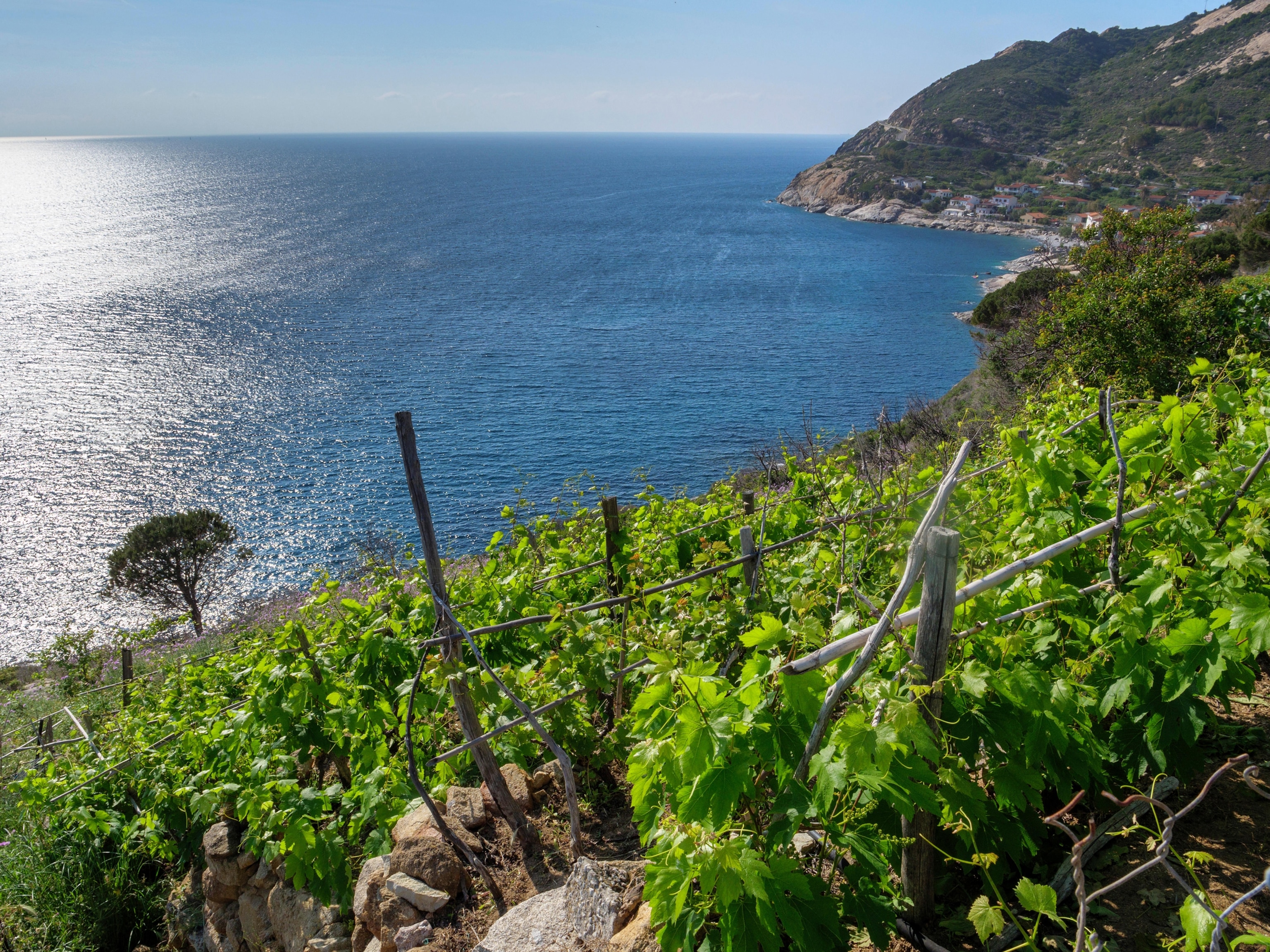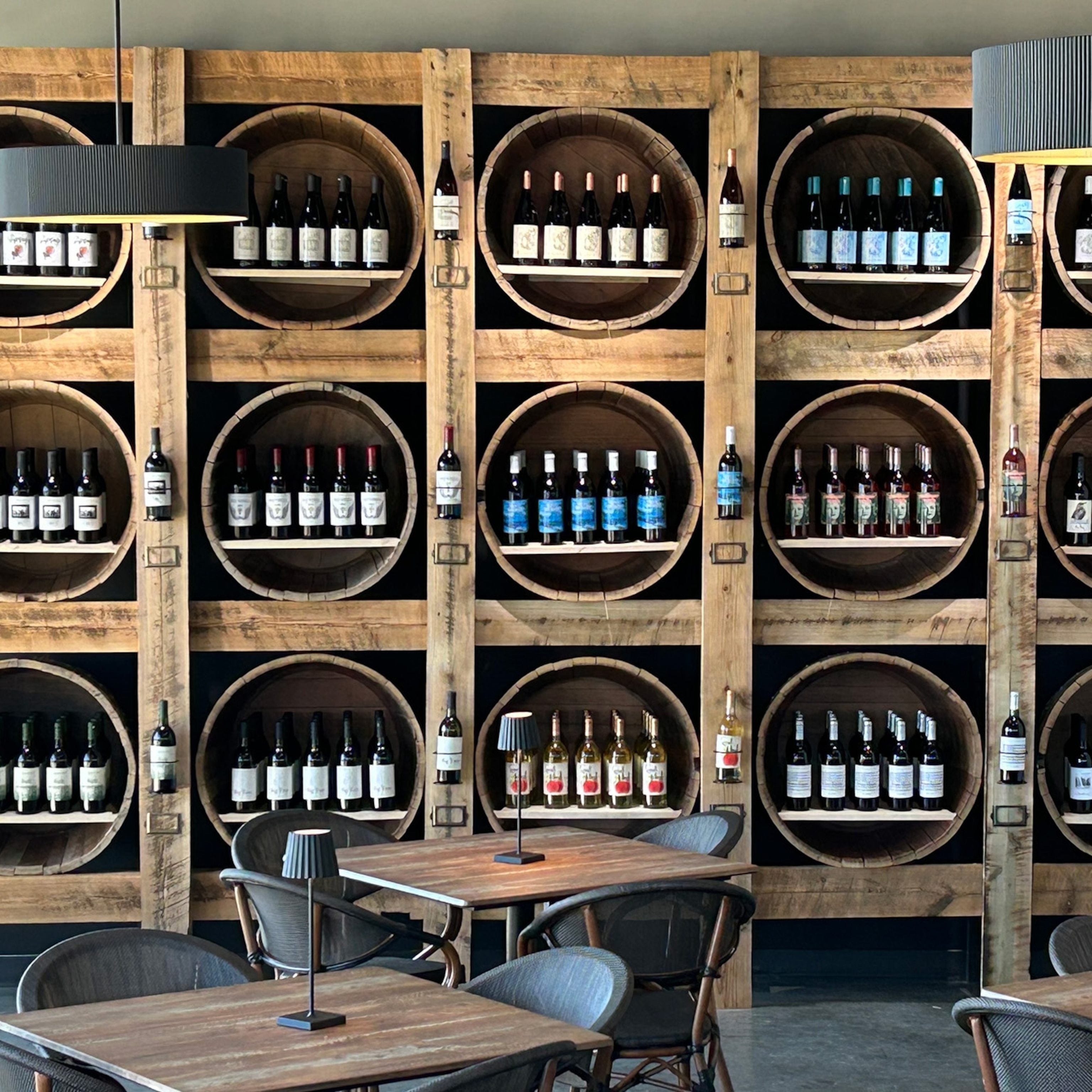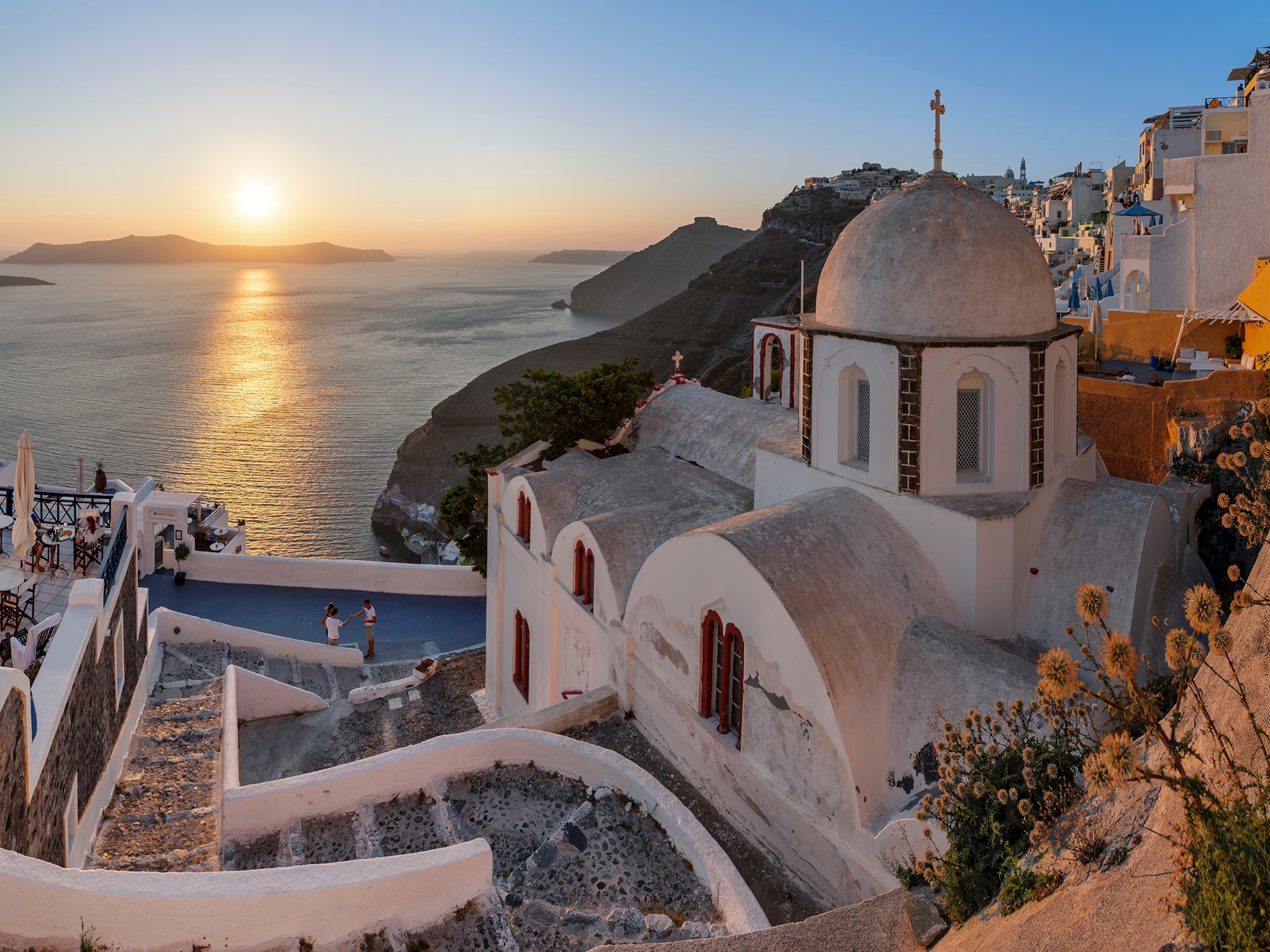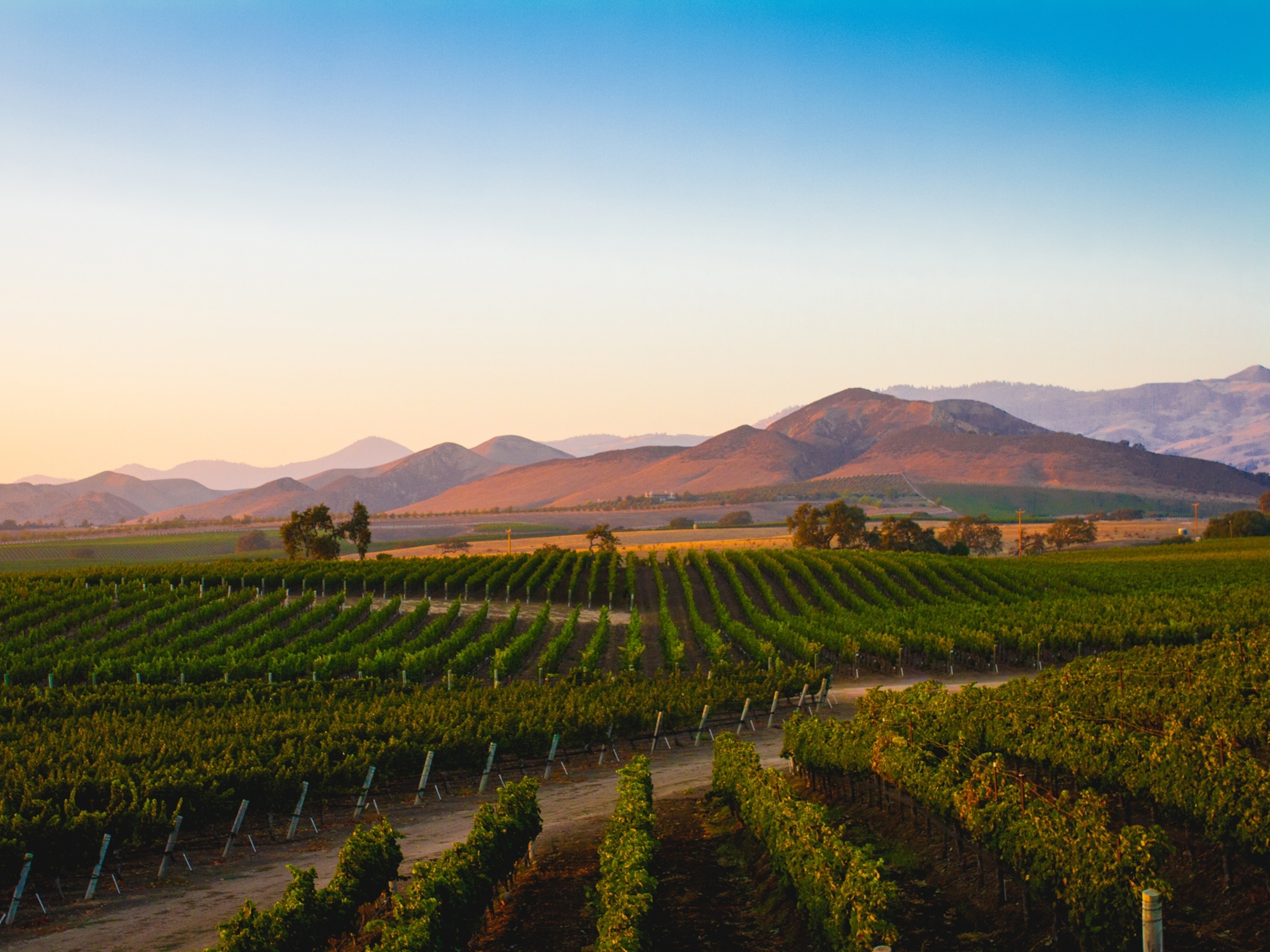It was a calm and balmy morning in September 2018 when winemaker Antonio Arrighi first plunged a basket of grapes into the Mediterranean Sea. His neighbors on the sun-drenched Italian island of Elba watched in disbelief. “Has Antonio gone crazy?”
Indeed, as the bunches sank beneath the water, where they would stay for five days, Arrighi felt a stroke of mad genius. He was resurrecting the process of creating marine wine—an Ancient Greek delicacy said to be favored by Julius Caesar.
The golden tipple’s connection to the Tuscan Archipelago runs deep. Remnants of Greek amphorae (terra-cotta wine jars) have been found on the seafloor not far from Arrighi’s vineyards. Merchants from the Greek island of Chios would often stop at mineral-rich Elba on their journey back from Marseille, France, where marine wine was a hot commodity, says Attilio Scienza, a viticulture professor at the University of Milan who collaborated with Arrighi.
This month the specialty beverage is returning to the market for the first time in more than 2,000 years as Arrighi winery releases 240 bottles of “Nesos” wine—marking yet another reason to visit Elba, beyond its 70-some beaches, Etruscan ruins, and Roman villas.
Arrighi is one of the many winemakers contributing to Italy’s renaissance of ancient viticultural techniques. There’s a growing interest here in recreating small batches of natural and sustainable wine from bygone eras. After all, a bottle with a story has always been valuable, and these are time machines for taste.
An immersive endeavor
Few libations have been shrouded in mystery quite like marine wines. Despite their popularity in Ancient Rome, as documented by historian Pliny the Elder, winemakers in Chios kept the method under lock and key. Their secret, it turns out, was submerging the grapes in saltwater, a process that naturally removes the waxy white surface bloom and allows the fruit to dry quickly in the sun. This preserves more aromas, creating a robust taste unlike anything else.

“There’s a long love story between the sea and wine,” says Angela Zinnai, a professor of food technology at the University of Pisa who worked closely with Arrighi on the project. “The sea represented the way for wine and its culture to be transported from the places of production to those of consumption—to every country in the world.”
(Drink in the history of our 9,000-year love affair with booze.)
It was this connection that led Arrighi to declare: “I’ll do it on Elba!” after learning about the obsolete technique from Scienza at a wine conference. With the help of three divers, Arrighi tried immersing Ansonica grapes at varying depths and durations in handwoven lobster traps before fermenting the grapes along with their skins in terra-cotta jars.
The first harvest yielded just 40 bottles, which were then analyzed by a team from the University of Pisa. Arrighi used the results to fine-tune his methods for the second harvest, in 2019, producing his first batch of marketable bottles, which then aged in the cellar.
I’ve never drunk a wine like this in my life. It allows you to journey through time and appreciate the beginnings of wine making.
Antonio Arrighi, producer of marine wine
Due to the small amount of salt in the grapes, there was no need for sulfites, stabilizers, preservatives, or yeast—making the wine completely natural. Moreover, a lab analysis of the grapes showed that the total phenolic content, which accounts for heart-healthy antioxidants, was double that of conventional white wines, says Zinnai.
“I’ve never drunk a wine like this in my life. It allows you to journey through time and appreciate the beginnings of wine making. It allows you to better understand the secrets of nature,” says Arrighi, who likens the aroma to ripe white fruit and almond.
The soft, round taste pairs perfectly with a view of Elba’s Porto Azzurro—particularly in the summer, when the harbor’s famous seafood restaurants and flower-lined promenades come to life. Not far from shore, visitors may just find Arrighi’s grapes under the sea.

Cultivating ancient wine tourism
People are fascinated by recreations of historic fermented beverages and will travel far and wide to sample them. In Italy’s Campania region, this phenomenon is most obvious around the archaeological site of Pompeii, where family-run wineries tout their use of Roman-inspired amphorae and pergolas.
But it’s in Pompeii’s own vineyards—adjacent to the world’s oldest surviving amphitheater—where a pioneering project has taken the process of recreating Ancient Roman wine one step further.
By studying evidence of grapes buried under the ash of Mount Vesuvius’ eruption in A.D. 79, the Mastroberardino winery and archaeologists were able to create casts of the vines’ root patterns in the soil. This allowed them to identify and replant the native grapes in their original plots—and produce annual batches of a red vintage, Villa dei Misteri, since 2001.

(Buried by Vesuvius, this ancient villa is an overlooked alternative to Pompeii.)
Over the past decade, protecting indigenous grapes has become a shared passion of Campania vintners such as Feudi di San Gregorio, a winery nestled in the mountainous district of Irpinia—the serene sister to the showy Amalfi Coast.
In a typical year 20,000 visitors explore the birthplace of some of Europe’s most cherished wines by way of art exhibits, a Zitomori Studio-designed cellar, a Michelin-starred restaurant, and “wine safaris” through the property’s 988 acres of vineyards. Feudi di San Gregorio’s latest project, a wine encyclopedia, chronicles the heritage of the region’s oldest grapes including Taurasi, Fiano di Avellino, and Greco di Tufo.
“In line with the French concept of terroir, these grape varietals belong here,” says Antonio Capaldo, chairman of the winery. “If you plant them somewhere else, you don’t achieve the same qualitative level. It’s amazing how they’re interlinked with the soil.”

A return to the roots
The interest in preserving native grapes has also inspired a new generation of vintners to elevate what it means to make sustainable wine. For example, Fattoria Fibbiano, an agritourism and wine estate southwest of Florence near the Tuscan coast, recently created the world’s first 100 percent Colombana wine. Historically the Old World grape was blended with other varieties to make the dessert wine Vin Santo and was dismissed as a standalone grape due to its lack of structure, says Matteo Cantoni, Fattoria Fibbiano’s owner.
Working with the University of Pisa, the Cantoni family used a cryo-maceration technique, in which dry ice slows grape oxidation, allowing the extraction of more structure and acidity. While complex, the method emits no carbon, which aligns with Fattoria Fibbiano’s focus on being a sustainable and organic winery powered solely by renewable energy generated onsite. Now in its second year, the winery will be producing a mere 5,000 bottles of its Colombana white.

“More people are becoming conscious consumers. They want less but better,” says Cantoni. With tropical notes of banana, peach, starfruit, and vanilla in the aroma, followed by a slightly salty taste, the Colombana wine is a testament to the soil.
“Where we are standing now used to be underwater five million years ago,” he says, while holding a piece of coral he collected from the vineyard.
Along with seashells, an excavation on Cantoni’s property revealed two Etruscan tombs filled with gold, tools, dishes, and terra-cotta wine cups. Perhaps the ancient civilizations that settled here more than 3,000 years ago were equally aware of the powerful microelements in the earth. They may have even sipped a wine similar to what Fattoria Fabbiano is producing today.
It’s these musings that are driving Italy’s winemakers to dive deeper into ancient techniques and to connect the dots laid out in history books. Through innovation and experimentation—and sometimes, a dip in the sea—palate pleasers of the past are once again filling glasses.
Julia Eskins is a Toronto-based writer who covers travel, design, and wellness. Follow her on Instagram.







